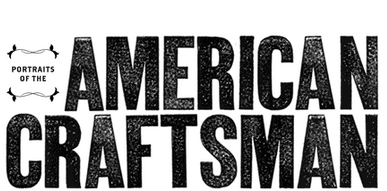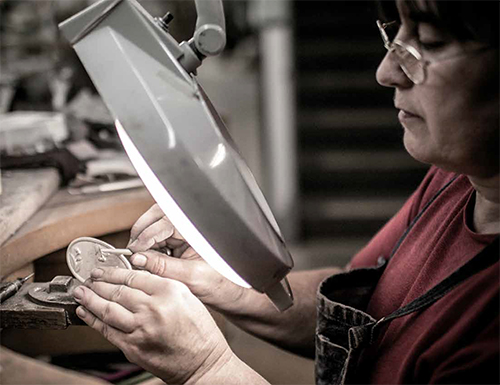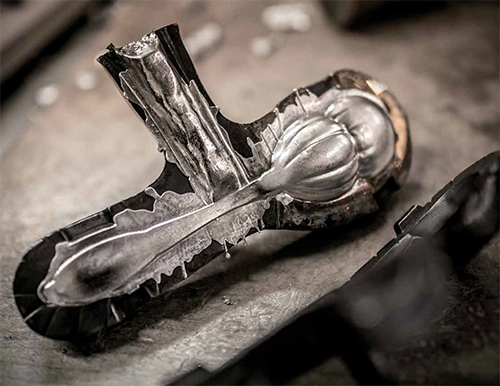Danforth Pewter: hundreds of years in the making.
When Judi and Fred Danforth finally hung their shingle—that is, when the pewtersmiths first opened a shop in an old Colonial-era Vermont barn—they told no one their secret.
In 1975 the couple had just moved back to the states from Nova Scotia, where Judi (pronounced “Jude-eye”) had been apprenticing. Upon returning to the United States, she and her husband, Fred, a former woodworker, opened Danforth Pewter. They made traditional items of pewter—candleholders, oil lamps, dresser boxes, kitchenware, etc.—but they didn’t reveal their deep connection to the craft’s history.
Fred Danforth, it turned out, was a great-greatgreat-great-great-grandson of Thomas Danforth II, the colonial-era business pioneer considered one of the preeminent pewtersmiths in US history (and whose offspring continued the family-run business for 118 years, ceasing in 1873). One hundred and two years later, the Danforths were once again molding, spinning, and shaping the beloved alloy.
“Even though we named the company ‘Danforth,’ even though we used the [family’s] lion touchmark, we wanted to build a business that relied on our own design and our own skills,” Judi Danforth says now. “We didn’t want to rely on history. So we didn’t talk about history for years.”
Now, nearly four decades on, she says, “It’s very much a part of our story.”
It’s a story that has taken them from that old farmhouse to their current workshop and store in Middlebury, Vermont. Here visitors can come watch Fred spin the metal as he works it into shape before they buy something next door. (The shape is usually from one of Judi’s vulcanized rubber casts, which can transfer greater detail than bronze.)
In Fred they can see a self-taught master craftsman working with “the most wonderfully malleable, forgiving, and useful material.” Working with a flat disc of pewter, spinning the metal, working on his lathe—it’s a fluid, mesmerizing process, like watching
someone work on a pottery wheel. “The people watching, they get enthusiastic about it,” Fred says. “Its energy seizes us.”
Judi has become a master carver over the decades. Because of her skill and the unique rubber-mold techniques they’ve incorporated into the process, the Danforths are able to take almost any object from concept to completion. As Fred notes, “We were able to take a craft that is hundreds of years old and apply mid-twentieth-century technology to it. A part of the art, skill, and aesthetic is in the detail of that mold. It answers the question, ‘What does a Danforth piece look like?’”
Judi continues, “We talk about these things every day. They’re decisions that give our work meaning. As a company, we think of an idea, we design it, we make models, the tooling, the molds, the pieces, we design the packaging, we keep it all in-house.”
And when schoolchildren tour the Middlebury store, they see not only the casting and the spinning but also a husband and wife who have now embraced and expanded upon the family history. In fact, today customers can buy “Woodstock” candleholders, named after the town where Fred and Judi Danforth first hung their shingle—still the most important part of their story.





